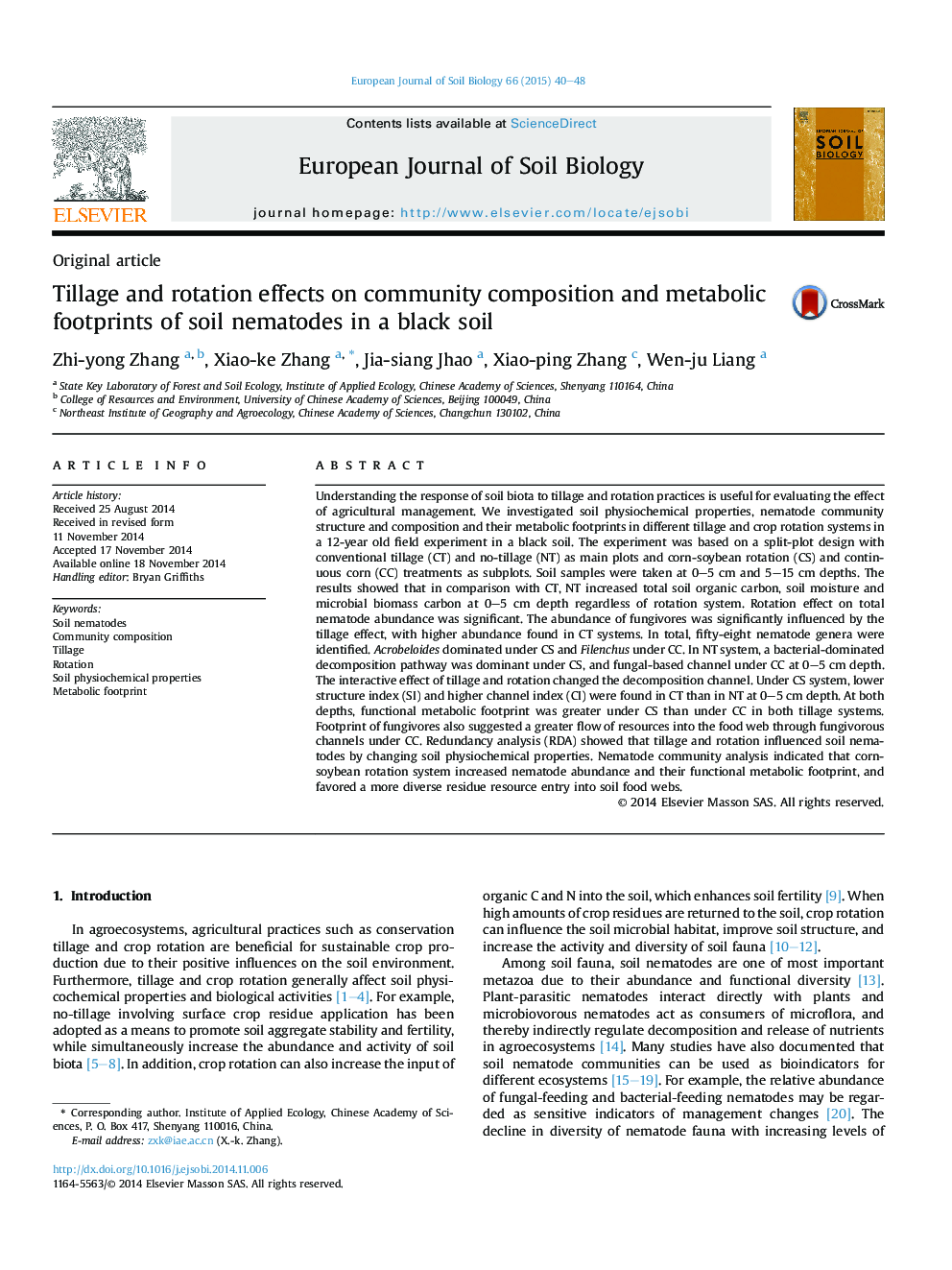| Article ID | Journal | Published Year | Pages | File Type |
|---|---|---|---|---|
| 4391811 | European Journal of Soil Biology | 2015 | 9 Pages |
Abstract
Understanding the response of soil biota to tillage and rotation practices is useful for evaluating the effect of agricultural management. We investigated soil physiochemical properties, nematode community structure and composition and their metabolic footprints in different tillage and crop rotation systems in a 12-year old field experiment in a black soil. The experiment was based on a split-plot design with conventional tillage (CT) and no-tillage (NT) as main plots and corn-soybean rotation (CS) and continuous corn (CC) treatments as subplots. Soil samples were taken at 0-5Â cm and 5-15Â cm depths. The results showed that in comparison with CT, NT increased total soil organic carbon, soil moisture and microbial biomass carbon at 0-5Â cm depth regardless of rotation system. Rotation effect on total nematode abundance was significant. The abundance of fungivores was significantly influenced by the tillage effect, with higher abundance found in CT systems. In total, fifty-eight nematode genera were identified. Acrobeloides dominated under CS and Filenchus under CC. In NT system, a bacterial-dominated decomposition pathway was dominant under CS, and fungal-based channel under CC at 0-5Â cm depth. The interactive effect of tillage and rotation changed the decomposition channel. Under CS system, lower structure index (SI) and higher channel index (CI) were found in CT than in NT at 0-5Â cm depth. At both depths, functional metabolic footprint was greater under CS than under CC in both tillage systems. Footprint of fungivores also suggested a greater flow of resources into the food web through fungivorous channels under CC. Redundancy analysis (RDA) showed that tillage and rotation influenced soil nematodes by changing soil physiochemical properties. Nematode community analysis indicated that corn-soybean rotation system increased nematode abundance and their functional metabolic footprint, and favored a more diverse residue resource entry into soil food webs.
Related Topics
Life Sciences
Agricultural and Biological Sciences
Soil Science
Authors
Zhi-yong Zhang, Xiao-ke Zhang, Jia-siang Jhao, Xiao-ping Zhang, Wen-ju Liang,
